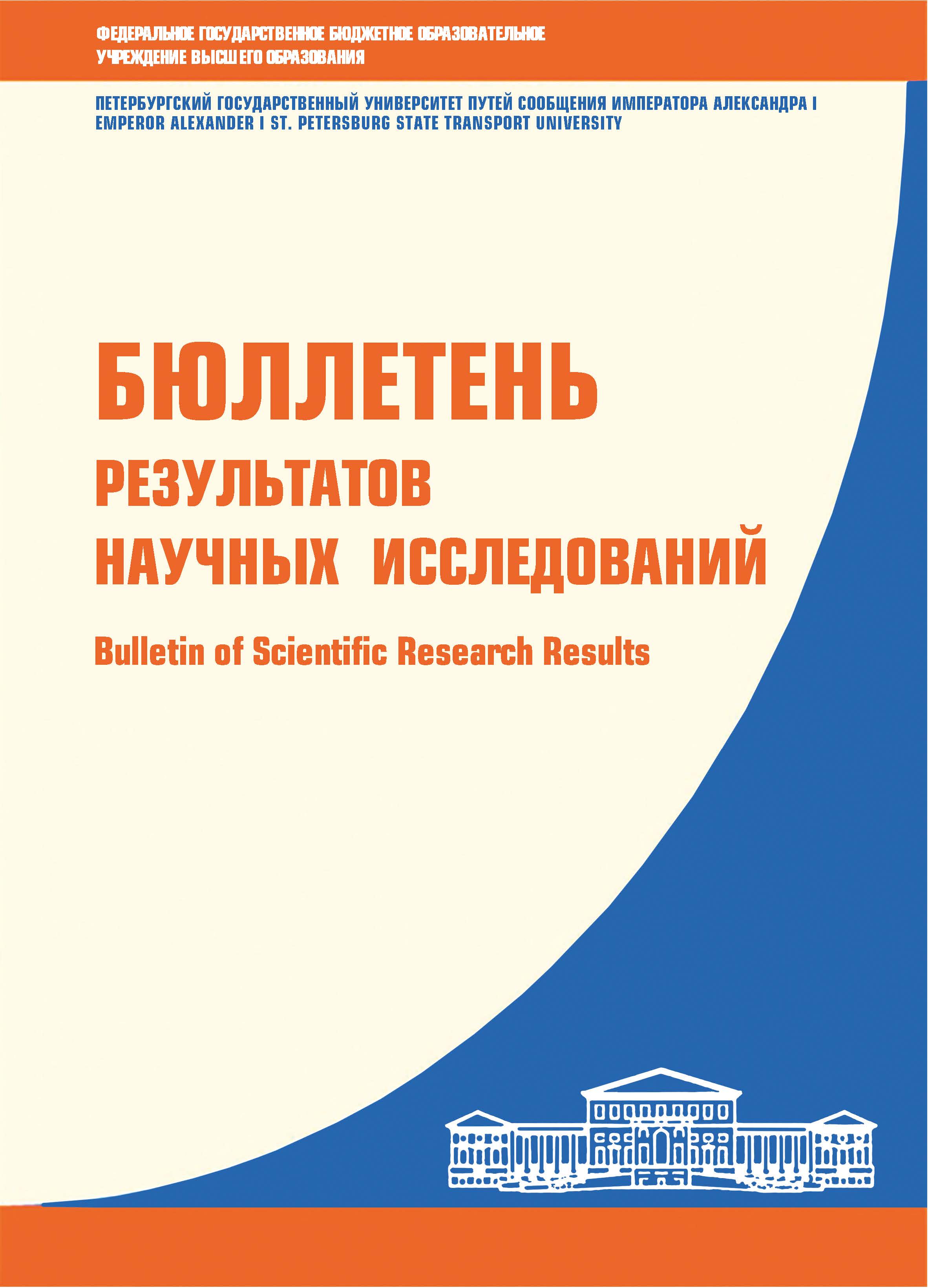Russian Federation
Russian Federation
Russian Federation
Russian Federation
Purpose: consider the problem of interaction between turnouts and adjacent sections of a seamless railway track. Methods: statistical data analysis. Results: an analysis of the results of domestic and foreign studies has been carried out, which show that in such areas there is a jump with subsequent extrusion of material of less rigidity and an increase in the slope of the elastic unevenness, i. e., an undesirable phenomenon occurs — a shock wave. The impact force depends on the mass of the rolling stock and the speed of movement, the geometric evenness of the rail track and the chosen approaches to designing the transition zone as a whole. Jump and mainly occurs due to compression and pushing out of structural layers and materials of lower rigidity in the under-rail area. The impact force depends on the mass of the rolling stock and the speed of movement, the geometric evenness of the rail track and the chosen approaches to designing the transition zone as a whole. Jump and mainly occurs due to compression and pushing out of structural layers and materials of lower rigidity in the under-rail area. Shock waves caused by uneven rigidity of sections have negative consequences (the appearance of deviations in level, subsidence, distortions, increased intensity of rail wear, the appearance of rail defects), which increase the cost of maintenance of the railway track. An analysis of the accumulation of residual deformations has been carried out, which shows the systematic formation of geometric irregularities in adjacent areas in the turnout area. Practical importance: from the point of view of the design of the transition zone, the expected advantage will be the differentiation of structural materials and elements and their influence on achieving the optimal gradation of railway track rigidity in the vertical and horizontal (transverse, longitudinal directions), selection of the optimal ratio of the mechanical properties of individual elements of the superstructure structure. It should also be noted that it is necessary to conduct an additional feasibility study of the feasibility of constructing transition sections in the area where the track and switches meet, taking into account the operational features of individual railway lines.
railway track, superstructure of the track, rail track, turnouts, transition sections, subsidence of the railway track, geometric unevenness of the track
1. Bezrukov M. V. Soedinenie rel'sovyh pletey besstykovogo puti so strelochnymi perevodami: diss. … kand. tehn. nauk. M., 1999. 131 s.
2. SP 119.13330.2017. Svod pravil. Zheleznye dorogi kolei 1520 mm: aktualizirovannaya redakciya SNiP 32-01-95 (utv. i vved. v deystvie Prikazom Minstroya Rossii ot 12.12.2017 № 1648/pr; red. ot 24.12.2019).
3. Rekomendacii po obespecheniyu ustoychivosti strelochnyh perevodov, rabotayuschih v sostave besstykovogo puti. R.709/11. III izd. razrabotano ekspertami Komissii OSZhD po infrastrukture i podvizhnomu sostavu 13–15 maya 2014 g. (utv. soveschaniem Komissii OSZhD po infrastrukture i podvizhnomu sostavu 21–24 oktyabrya 2014 g.) / Komitet OSZhD, Varshava.
4. Instrukciya po ustroystvu, ukladke, soderzhaniyu i remontu besstykovogo puti (utv. Rasporyazheniem OAO «RZhD» ot 14.12.2016 № 2544r).
5. Instrukciya po tekuschemu soderzhaniyu zheleznodorozhnogo puti (utv. Rasporyazheniem OAO «RZhD» ot 14.11.2016 № 2288r).
6. Shahunyanc G. M. Zheleznodorozhnyy put'. M.: Transzheldorizdat, 1961. 615 s.
7. Verigo M. F. Novye metody v ustanovlenii norm ustroystva i soderzhaniya besstykovogo puti / VNIIZhT. M.: Inteks, 2000. 184 s.
8. Pershin S. P. Metod rascheta ustoychivosti besstykovogo puti // Trudy MIIT. Vyp. 147: Put' i putevoe hozyaystvo. M., 1962. S. 28–97.
9. Kogan A. Ya. Prodol'nye sily v zheleznodorozhnom puti // Trudy VNIIZhT. Vyp. 332. M.: Transport, 1967. 166 s.
10. Glyuzberg B. E. Vliyanie parametrov grebney vagonnyh koles na bezopasnost' dvizheniya po strelochnym perevodam // VNIIZhT. 2018. № 2. S. 67–76. DOI:https://doi.org/10.21780/2223-9731-2018- 77-2-67-76. EDN XMGDDN.
11. Hodas S., Vrchovsky E., Pultznerova A. Monitoring and Expertise of Sections with a Sudden Change in Railway Track Stiffness — Transition Zones of Bridges // Buildings. 2023. No. 13 (8). R. 2056. DOI:https://doi.org/10.3390/buildings13082056.
12. Egorov M. A. Konstruktivno-tehnologicheskie i organizacionnye meropriyatiya povysheniya stabil'nosti geometrii rel'sovoy kolei na strelochnyh perevodah: diss. ... kand. tehn. nauk. M., 2017. 177 s.
13. Zak M. G., Ershkov O. P., Tkalov E. D. Teoreticheskiy analiz vliyaniya rasstroystv rel'sovoy kolei na dinamicheskoe vozdeystvie podvizhnogo sostava i puti i ocenka neravnozhestkosti rel'sovyh nitey // Trudy VNIIZhT. 1980. Vyp. 628. S. 67–101.









